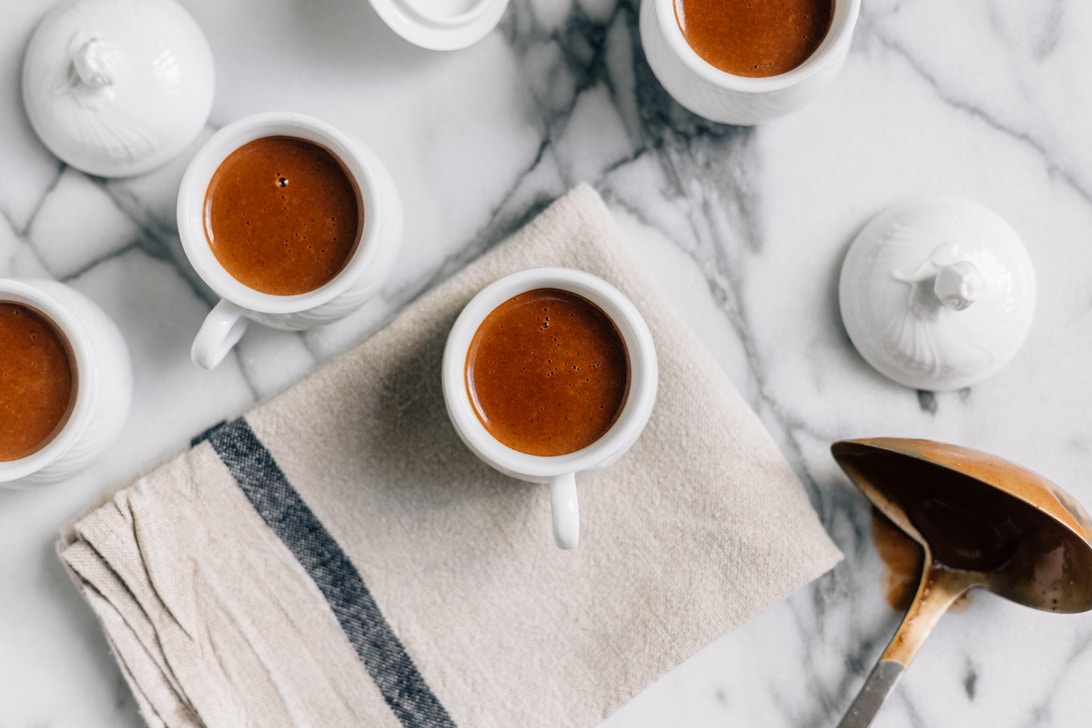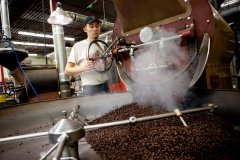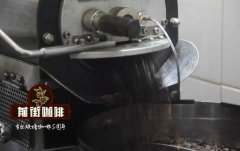Espresso trends and differences-how different are the Espresso recipes in different cities?
Professional coffee knowledge exchange more coffee bean information please follow the coffee workshop (Wechat official account cafe_style)
Espresso is a high concentration of coffee liquid obtained by using the pressure of a coffee machine to extract finely ground coffee powder in a short time. Change American coffee with water and cappuccino and latte with milk. As the base of so many drinks, it is of course impossible for the whole world to use the same proportion of formula, so what are the differences and trends among countries?
Author James Hoffmann surveyed about 1500 responses, screened out some invalid responses, and summarized the content of this article.
It is hoped that these coffee data will provide some global and local espresso operation trends. The author also wants to know whether there is too much correlation between general consumers and professionals on taste and style.
But it must be stated that this article is not about an overview of coffee around the world, but about the people who read this article, how they make coffee in coffee shops and at home.
The last thing to pay attention to is the proportion of cooking. What we want to talk about here is the relationship between the amount of coffee powder and the ratio of espresso to espresso, that is, the gouache ratio is 1:2 or 1 drink 1.5. I'm not going to express it as a percentage, like 50% or 66%, but in proportion. It is easy to convert this, but we are still used to using the concentration ratio when cooking.
Who is the most picky?
Let's first compare the general commercial formula with the general household formula, they are actually very similar.
Commercial formula for household VS
Specific cooking time for user powder and concentration of espresso
Family 18.3g 36.4g 1:2 24s-36s
Commercial 19.0g 37.5g 1purl 1.98 25s-34s
The cooking formula and proportion are very similar. The only difference is that the average consumer can accept a wide range of cooking time. Interestingly, however, the average consumer is quite average in cooking style. However, the average consumer has a higher standard deviation in the cooking formula (great difference), but a lower standard deviation in the cooking time (the acceptability is more consistent).

Ristretto (short extraction concentration) no longer exists.
Not only is the 1:2 ratio too common, but also the proportion of coffee shops and ordinary consumers who brew Ristretto is very low.
This explanation may be magnified to the extent that the author classifies a ratio of less than 1. 5 per cent as ristretto. Different definitions may be interpreted as a ratio of 1:1.
11.8% of business users and about 14.5% of domestic users cook thicker espressos/ristrettos (it may be controversial to use goods to judge consumer preferences)
We try to ignore this data and the trend of cooking ratio, let's take a look at the sales volume of coffee shops (please refer to the picture chart):

Generally speaking, espresso will be brewed in a relatively high proportion, so it will be lighter, although we have no way to know the amount of extraction, but if we assume that it is all at a reasonable level (the brewing ratio may be higher), then the concentration of most espresso is about 9%. (for reference only, many people, including the author, used to prefer a concentration of 12%, or about 1.5%. )
Although some people would claim that Italian espresso is the most orthodox (because Italian espresso is closest to 1:2 or higher), Italy has long traditionally brewed 7 grams of powder per cup. However, the coffee ingredients used (such as roasting degree, moisture content of raw beans … ) it could be very different.
Some of the variation factors are as follows:
An increase in the concentration of extraction (most people pursue higher concentrations of extraction)
More experimental bean grinders and formulations (EK43, etc.)
Network echo
More and more people are trying similar ways, and we will discuss this in the conclusion.
Espresso guidelines for different cities
It's interesting to study how different cities have different coffee styles, and the author struggles with how to present the data, browsing through 20 different cities (there are enough responses to do data analysis). The author does not want to just put on these data, so focus on explaining the differences between cities, starting with the author's hometown:
London: powder quantity 18.5g/ espresso quantity 34.6g/ cooking time 26-35 seconds
What is interesting about London is that the level of change in coffee formula is the lowest. In fact, the coffee style here is more average than in other cities I have seen, regardless of whether this phenomenon is interpreted as a lack of diversity or a strong consensus among Londoners. London consumers will be more persuasive than I am. I was also surprised that London is one of the top five cities with the thickest / heaviest coffee brewing ratio, while other cities with lower brewing ratios are San Francisco, Seoul, Moscow and Philadelphia.
New York: powder quantity 18.7g/ espresso quantity 35.5g/ cooking time 24-33 seconds
New York has a lot in common with London: a small percentage of people cook ristretto (about 4.5 per cent for households and businesses), but the diversity of coffee recipes is relatively low. New York brews a little more coffee and takes a little less time, but on average it is very similar.
Sydney: powder quantity 20.6g/ espresso quantity 47.2g/ cooking time 26-35 seconds
The author would like to connect four major Australian cities (Sydney, Melbourne, Perth and Brisbane). As an Australian bean baker / supplier, it is not surprising that only these four cities in Australia have an average coffee brewing capacity of more than 20g. (stereotype)
Choose Sydney because it amazes me. For a long time, the stereotype of Australian coffee is a large amount of powder, and then a relatively short brewing time (double rizzbanger), obviously this is not an isolated case, perhaps because of this stereotype, Sydney now brews the thinnest and lightest coffee. The higher concentration ratio in various places was 1 VOR 2.3, while that in Perth 1:2, Melbourne and Brisbane was 1 VR 2.2.
It is important to note that the average Australian consumer does not have to brew coffee in the same way. they have a lower amount of coffee powder (19.5g) and a lower concentration (1purge 1.8). However, I don't think we can confuse consumer preferences with local brewing habits.
Moscow: powder quantity 18.3g/ espresso quantity 33.1g/ cooking time 22-27 seconds
What is interesting about Moscow is not only that its powder content is lower than average (only Montreal, Canada, but not Montreal is listed in this article), but the brewing time of coffee is also shorter than anywhere else. Almost every other city has a brewing time of more than 30 seconds. (the amount of espresso in Stockholm is closest to the brewing time-23-31 seconds.)
What is the reason for such a short cooking time? Is it the ingredients in the water that help to extract? Or does the preferred technique enable them to cook faster? I don't know, but it's worth exploring.
Los Angeles: powder quantity 19.1g/ espresso quantity 37.0g/ cooking time 25-32 seconds
Los Angeles is worth noting that it is a place of diversity. Although the average cooking ratio is close to 1:2, the proportion of respondents cooking ristrettos here is the highest (30 per cent). The cooking formula is the most changeable. Los Angeles is the hometown of Diversified espresso Coffee. I think Los Angeles has high reference value and makes me want to explore the city in depth.
Does the city represent the country? No, on the whole, there is a reasonable difference in cooking style between the country and the capital (but not very much). Take the UK as an example:
VS London, UK
Place powder quantity espresso quantity concentration ratio brewing time
United Kingdom (excluding London) 18.0g 35.8g 1:2 26-32 seconds
London 18.5g 34.6g 1purl 1.87 26-35 seconds
Some people may think that these trends and fashions are applicable to most espresso, or you may think that the situation in the capital has nothing to do with me, and the difference between the two has little impact on the conclusion.
Diversity no longer exists.
The final conclusion shocked the author, because the style of each city is really similar, and the author is really struggling with it. Perhaps these figures reflect everyone's wisdom in cooking, and in fact they may also be best practices. 1:2 is probably the best way to make coffee. However, the author did not use it because the ratio was too perfect.
In the early days, many people were fascinated by the diversity of coffee and could taste many different aromas, full of potential and possibilities.
There is a real aesthetic value behind the coffee industry, but what we are seeing here is the brewing aesthetics, which is widely based on the coffee industry. Or are we seeing a trend?
Nowadays, with the development of online information, blogs, tweets, news and forums can all share information quickly, but the disadvantage is that the information often spreads too fast and is not rigorous enough without full proof.
The author has been cooking with the 1:2 ratio for some time, but this survey does not confirm this practice. On the contrary, it makes the author wonder whether this ratio is used because of the convenience in calculation. Is it because everyone does this that the author uses this proportion to cook? Do you want to make sure how to present and seek the recipe? But I know very well that I like the ratio of 1.55 to 1.55.
It is time for many people to rethink the way coffee is brewed. It's time to focus on sharing experiences from the perspective of taste, touch and intellectual coffee. The author does not believe that everyone's preferences, ideals and goals for coffee will be the same, and I do not believe that all consumers expect the same thing.
The author believes that homogeneity is bad for boutique coffee and consumers, and proudly and deliberately rejects the capital-oriented market. I hope that reading this article will inspire you to get out of the comfort zone and do some experiments by talking to your colleagues. to define what you most want to know about the source of coffee, roasting methods and end brewing and service.
Article translated from: jimseven
END
Important Notice :
前街咖啡 FrontStreet Coffee has moved to new addredd:
FrontStreet Coffee Address: 315,Donghua East Road,GuangZhou
Tel:020 38364473
- Prev

How important is the moisture content and density of raw beans to the baker?
Professional coffee knowledge exchange more coffee bean information Please follow the coffee workshop (Wechat official account cafe_style) Today bean bakers are adept at judging by the color of raw beans-the touch from the touch-the rising rate of temperature during baking to determine whether the moisture content of raw beans is too dry or too high. The moisture content of the freshly picked coffee fruit is about 45-55%, and the subsequent treatment method
- Next

What is the Roast Delta value? What is the use of the Roast Delta value of coffee roasting
Professional coffee knowledge exchange more coffee bean information please follow the coffee workshop (Wechat official account cafe_style) what is the "Roast Delta value"? It is the "difference" between the Agtron value of your coffee beans and the grinding Agtron value. For example, you roast a bean for Italian coffee, 15 minutes after the bean is cooled in the oven.
Related
- Beginners will see the "Coffee pull flower" guide!
- What is the difference between ice blog purified milk and ordinary milk coffee?
- Why is the Philippines the largest producer of crops in Liberia?
- For coffee extraction, should the fine powder be retained?
- How does extracted espresso fill pressed powder? How much strength does it take to press the powder?
- How to make jasmine cold extract coffee? Is the jasmine + latte good?
- Will this little toy really make the coffee taste better? How does Lily Drip affect coffee extraction?
- Will the action of slapping the filter cup also affect coffee extraction?
- What's the difference between powder-to-water ratio and powder-to-liquid ratio?
- What is the Ethiopian local species? What does it have to do with Heirloom native species?

